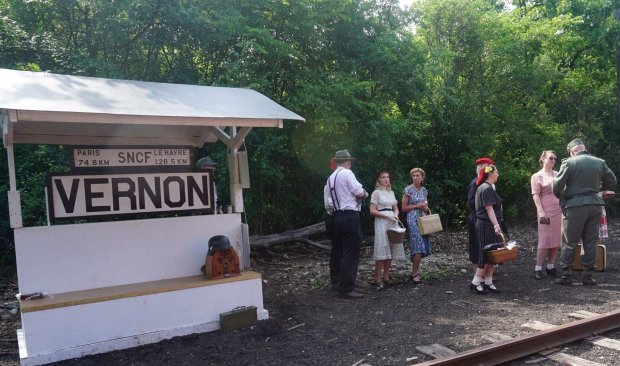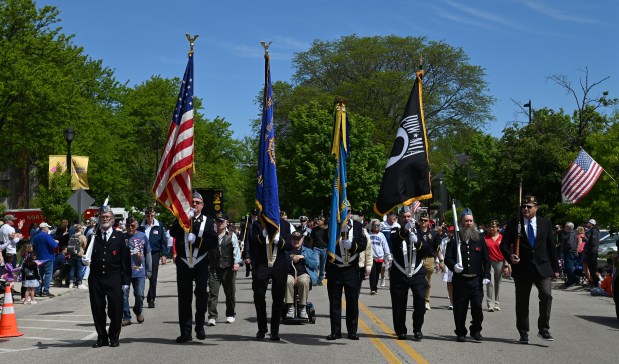Mayor Brandon Johnson will push forward this spring an ordinance designed to reform land-use policies that environmentalists say for decades led to pollution in Black and Latino communities.
Some advocates for heavy industry are worried. None deny minority neighborhoods on the South and West sides suffer more from the dirty air, water and soil that historically came from steel mills, smokestacks and truck traffic. But they say if Johnson’s proposal puts more obstacles in the way of new industrial businesses getting started, it could squelch much-needed job creation.
“We need to make sure we’re not disincentivizing industry, because these jobs are needed throughout the city,” said Jonathan Snyder, executive director of North Branch Works, a nonprofit advocate for economic development along the North Branch of the Chicago River. “If we send a signal that coming here is an expensive, complicated process, we will not be successful in attracting business.”
Called the Hazel Johnson Cumulative Impacts Ordinance, a tribute to the late Far South Side environmental and community activist, the proposed law was introduced at the April 16 City Council meeting and referred to the rules committee.
If passed by the full City Council, it would establish a community-based environmental justice advisory board and require industrial companies seeking new development permits to conduct community health assessments, ensuring their projects would not further damage public health.
Supporters of the ordinance point out it will have no impact on businesses that don’t have significant environmental footprints, including new restaurants, retail and other commercial development. And developers with proposals for new heavy industry are already required to conduct air quality assessments and traffic studies, so community health assessments should not be much of an additional burden.
“If it passes, it would be an important example of a local government stepping up to address what we now understand about the cumulative effects of pollution, at a time when the federal government is trying to tear those efforts down,” said Robert Weinstock, director of the Environmental Advocacy Center at Northwestern Pritzker School of Law, who represented the Southeast Environmental Task Force in a federal complaint against the city.
Snyder says the legislation could already be out of date. Modern industrial operations are far cleaner than Chicago’s old mills and factories, which dumped toxic waste near low-income communities like the Altgeld Gardens public housing development, which Hazel Johnson resided in, leading to elevated rates of respiratory and cardiac ailments.
“We’re not in the era of smokestacks just spewing things into the atmosphere,” Snyder said. “Maybe we’re trying to regulate a problem that doesn’t need regulating.”
Snyder and other advocates say they don’t outright oppose the legislation. They plan to press council members and city officials to provide more details about how the ordinance will work, including which pollutants get measured, how much the additional studies will cost businesses and whether needed projects could get canceled.
“The idea of the ordinance is well-intentioned, but what will the effects be, both intended and unintended?” asked Jim Longino, director of industrial and business services at the Greater Southwest Development Corp., an economic development and fair housing agency on the city’s Southwest Side.
The biggest worry is that the ordinance will hurt the city’s reputation as a business hub, said Ted Stalnos, president of the Calumet Area Industrial Commission, a nonprofit that promotes economic development on the South Side and northwest Indiana.
“The last thing Chicago needs as we’re headed toward a fiscal cliff is something that discourages business,” he said.
The Hazel Johnson ordinance grew out of a 2020 federal civil rights complaint filed by the Southeast Environmental Task Force and other groups challenging the city’s concentration of polluting industries in certain neighborhoods. It was filed after the administration of then-Mayor Lori Lightfoot inked a deal with Ohio-based Reserve Management Group, allowing it to move a notorious metal shredder in the affluent Lincoln Park neighborhood on the North Side, often cited for pollution, to the Far Southeast Side near the Calumet River.
Lightfoot reversed course on the shredder after the administration of President Joe Biden urged the city to consider the Southeast Side’s high level of pollution, and how that epitomized “the problem of environmental injustice.” In 2022, city officials denied the company a permit, and a Cook County judge in August 2024 upheld that decision.
Several other high-profile environmental controversies recently cropped up on the South and West sides. In 2020, Hilco Redevelopment Partners botched the demolition of an old coal plant’s smokestack, blanketing Little Village homes with dust and debris. Southeast Side environmental activists also fought successfully to remove huge mounds of gritty black petroleum coke left for years near their homes.
Regulators investigated more than 75 Southeast Side polluters for Clean Air Act violations since 2014, including some that poisoned yards and playgrounds with manganese, a dangerous metal often used in steelmaking.
The Southeast Environmental Task Force and the city settled the federal civil rights complaint in 2023. The settlement required City Hall to complete an assessment of neighborhood pollution. It showed many South and West Side communities faced long-term environmental burdens. The settlement also called for the city to revamp planning, zoning and land-use practices to protect hard-hit areas, paving the way for the Cumulative Impacts Ordinance.
Reserve Management Group officials say their shredder project has been unfairly targeted. The company says it spent more than $80 million on the new Southeast Side facility at 11600 South Burley Ave., called Southside Recycling, and included an onsite wastewater treatment plant, air monitors and other advanced pollution controls absent from the old North Side facility. It was completed in 2021, and would have employed about 100, but Lightfoot’s reversal stopped it from opening. The company is suing the city, claiming officials had no authority to deny a permit.
“Regardless, any good faith cumulative impact assessment would have resulted in the City approving our state-of-the-art facility that met all legal requirements,” according to a written statement from Steve Joseph, CEO of Reserve Management Group. “Further, it would have helped the City achieve its sustainability goals by reusing over 500,000 tons per year of obsolete metal in an environmentally safe way by utilizing the most advanced pollution control technologies.”
Stalnos, a Southeast Side resident and former steelworker, said keeping Southside Recycling shut kills jobs and damages Chicago’s reputation among potential investors, and further restrictions will worsen the problem.
“I spent 15 years working onsite at the Republic/LTV steel mill on Avenue O,” Stalnos said, “and back then the (Hazel Johnson) ordinance would have been wonderful, because 50 years ago the industry had some bad players. It doesn’t now.”
Between 1951 and 1977, the mill where Stalnos worked dumped slag near the intersection of 126th Street and Avenue O, contaminating the land and a nearby creek with lead, chromium and other compounds, according to the U.S. Environmental Protection Agency. It is now a Superfund cleanup site.
The Metropolitan Planning Council, an independent nonprofit, favors Johnson’s proposal. Its analysis shows polluting industries still present problems for city residents, especially in Black and Latino communities where most of Chicago’s heavy industry is concentrated.
“While all Chicagoans ultimately suffer the environmental and health harms of industrial pollution, the evidence is clear that residents living in closest proximity to polluting uses bear these impacts most directly, intensely, and disproportionately,” stated MPC CEO Dan Lurie in an April letter to City Council members.
The planning group’s analysis was bolstered by other research on Chicago completed in 2022 by the U.S. Department of Housing and Urban Development, and spelled out a uniform process to ensure new businesses would not wreck people’s health, he stated.
“The clear, citywide- and evidence-based approach of the proposed ordinance would replace the current approach that is used to make heavy industry land-use decisions, which is ad hoc and site-by-site,” Lurie stated.




